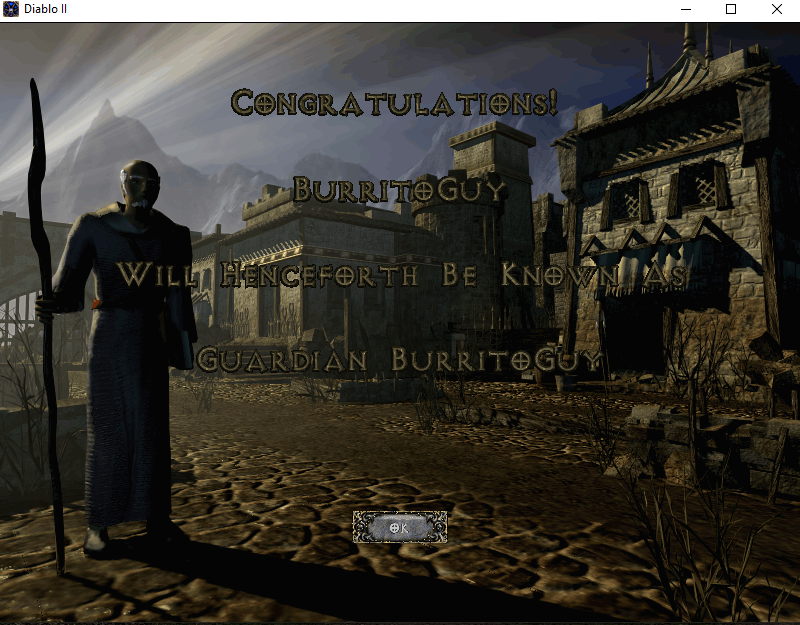Diablo II sits atop my video game list because I’ve dumped more time into this one than any of the others, on and off, over the span of 13+ years. It’s the kind of game that makes you want to make games. It’s the sort of program that makes you want to learn statistics or machine code or something and just roll those dice to infinity and back again in your own worlds.

It’s an exciting game, but it’s very simple, too. Hack and slash with your character until everything else is dead. Or almost nothing—you can play it pacifist, too, if you want. The makers took the character creation from DnD and made it even more streamlined. You take on a classic archetype and wear that shell tirelessly; there are no classes or subclasses—you can choose one of several skill trees, but they’re not even equally divided, so maybe don’t bother. But there’s freedom there, too: find the right niche weapon or armor drop and you can completely transform yourself into an unrecognizable fighter.
But those valuable rare and unique items are terribly scarce around here. You can trek through the entire game and find not one valuable item. This game is a slot machine in the worst way, but, somehow, it’s a fun one: the goal becomes—instead of defeating all the devils once and saving the world—a Groundhog Day in Hell, where you defeat the same monsters over and over and over. Hoping they drop something decent this time. Please.

Everything I’ve said so far has sounded awful and you may ask what is wrong with me to have put so many hours into such a horrible grinding slot machine. Fair question. Here’s the good, though: combat is fundamentally fun. Trading stuff is fun. Teaming up is fun. Getting a character through the game with no items whatsoever is probably not fun, but possible. Speed-running is fun. Hardcore (permanent character death) is fun—more fun than the other way. That’s where the game tricks you into realizing something that the old-timers always knew: the harder the game, the better. And I say that as someone who in those 13+ years has never even finished the end game matter!
Diablo II is, ultimately, an adventure. I’ve written elsewhere about what that adventure looked like for each of the hardcore characters with whom I was able to survive the entire game. This game comes from a time when computer games weren’t supposed to push you through in a straight line. It mimics the fast action and danger of an arcade fighter, but, instead, it’s an exercise in creating your own adventure; Diablo II is a toy that you learn to play with on your own, and it’s a different run each time, no matter how many sorceresses, paladins, and amazons you go through.

Foundationally, Diablo II has made me think about game creation in ways no other game ever has. It’s oddly fun doing the math on how many runs I should attempt on Pindleskin or the High Council of Travincal to get a 5% chance of dropping the weapon or rune I need. Whenever I play this game I think about the odds of reaching a goal, and weigh options to decide not just what I should do next in this game, but how exactly I would build it out in my own virtual world. (Still need to start that one, though.)
Diablo II is a game of story problems, and stories, of faceless characters who become heroes despite garbage weapons and plastic armor. And you, dear player, become a hero right alongside them. To the whole gang at Blizzard North (RIP), thanks for making a game that sums up exactly what computer games should always be: windows of potential, portals to new worlds.
